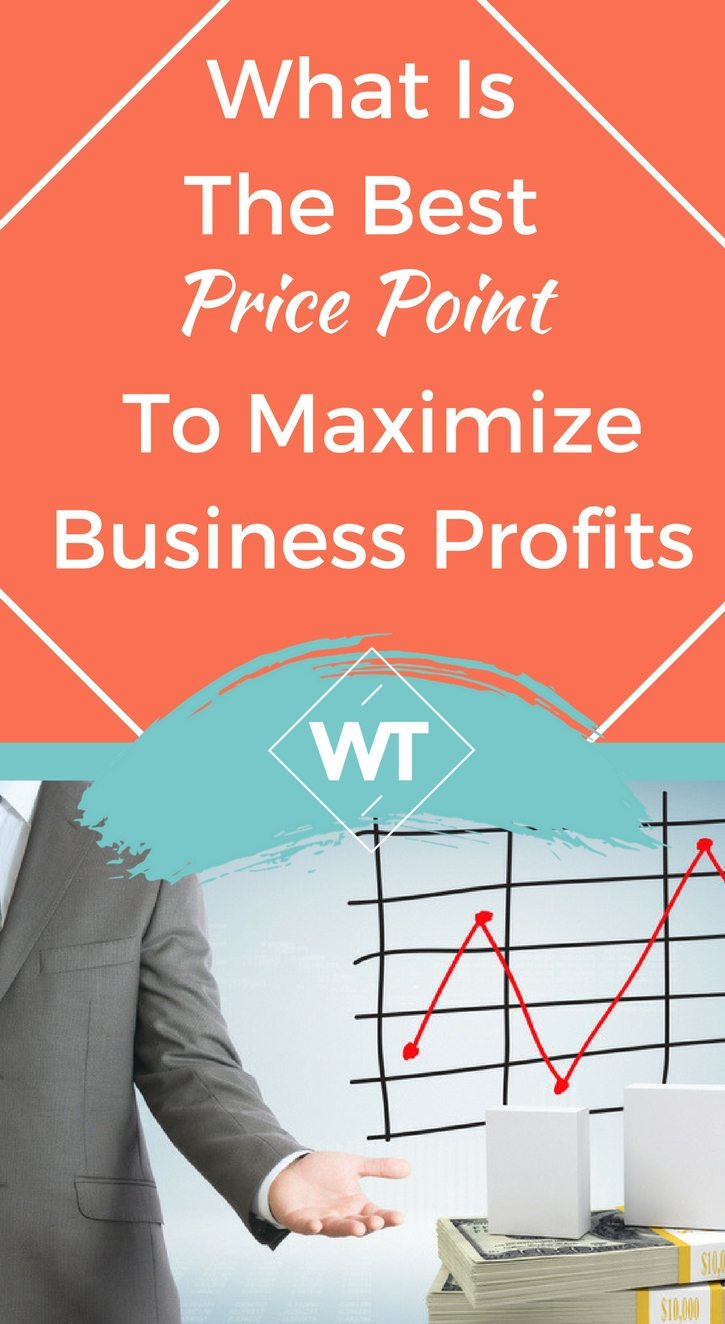What Is The Best Price Point To Maximize Business Profits


When building a business it’s imperative that you build wealth in different ways. One of the ways to do this is to create different price point offerings.
It’s too often that business owners bank on just one product or service to get them through.This may work for some time, but eventually, you’ll find it smarter to have different offerings that work together, with each—or at least many—at their own price point.
It is by having multiple offerings at their own price point that you can help the most people, learn the art of the up-sell and familiarize people with your work without the necessity of such a huge investment.
In this article we’re going to describe different price points and how you can make each price point work together. We’ll also give some examples that work for online businesses as well as brick-and-mortar businesses so that you get a solid understanding of how this method helps build wealth.
1. Free Price Point
The first price point we’ll be discussing doesn’t have a price point at all—because it’s free. “Free” is a great way to get people familiar with your business at no cost to them. People also tend to like free if they’re going to take the time to test something out.
Let’s take online marketing as an example. Companies are spending a lot of time, effort and money in online content like blogs. That’s because blogs are the “free” part of the price point equation. It’s free content that companies use not just to market themselves, but also to familiarize new customers and keep old customers coming back.
Another way in which this price point is used online is through free opt-ins. You may notice that most websites you visit offer something for free in exchange for your information. Sometimes it a free ebook, sometimes it’s an audio, and sometimes it’s an e-course. This helps companies build leads. At www.wisdomtimes.com, for example, we offer our own Free eBook “Secrets to creating the life of your Dreams.” If you haven’t downloaded a copy, please do so.
Two other ways in which the “free” price point is used—particularly in brick-and-mortar businesses—are free consultations and free samples. For instance, how many times have you purchased a product after trying a free sample or trial offer? Or, how many times have you contracted a service provider after a free consultation?
This is just another way the free price point helps companies get leads and prospects who may eventually turn into paying clients.
2. Low Price Point
A low price point refers to services or products (though usually products) that give prospects and customers a solid understanding of the business and what value it provides without them having to make a huge investment on their part.
For instance, books have become a huge way that businesses are selling a product while familiarizing customers about their higher priced offerings. I’ve gotten many a coaching clients just from reading my book which they can purchase for as low as $4.99.
A note about books as a low price point offering, they have become a huge selling and marketing tool online. Recent statistics show that the majority of books on bestseller lists were either self-published or published by small publishers. Self-published pieces also account for 31% of sales in the Kindle store.
Of course, you’d have to write a good book. The key is to make sure that your low priced products—and all your products for that matter—offer a lot of value and help people solve their problem.
The real advantage here is that low price point products are scalable. You create them once and then they sell over and over again.
3. Mid Price Point
Mid price point products or services are those that are just below your highest priced offerings.
For example (if you’re a coach), your mid price point offering may be group coaching or an online course people can purchase on demand.
This has a few advantages. First, mid price point offerings are also scalable. If you create an online course you develop it once and then it also sells over and over again. This also allows you to help more people over time.
4. High Price Point
High price point products are those that require a lot of your time and attention, meaning they should be priced accordingly. Or, maybe it’s your flagship product that has a lot of value.
For instance, I’ve seen sales coaches charge upwards of $10,000 or more for 10 months of private coaching. I’ve even heard of top-notch coaches charging this for just one day of intensive coaching! This makes perfect sense because they are giving you a lot of their time, attention and expertise.
Another high priced offering is speaking. Again, because this requires your time, effort, expertise, presence and sometimes travel, people charge upwards of thousands of dollars for a speech.
Example of multiple price points – Marie Forleo
Of course, it doesn’t always have to be a service. You could have a high price point product that serves as your flagship. For example, business coach Marie Forleo’s main offering is her 8-week long online training program, B-School. It’s got a hefty price tag of about $2000 to participate.
Now, notice what Marie Forleo does throughout the year.
- She offers a ton of free content with her YouTube videos (free price point)
- She has a book on Amazon that people can purchase (low price point).
- Those two offerings help Marie Forleo get the credibility, audience and leads she needs in order to be able to sell so many seats to B-school once a year (high price point).
I’m sure she would charge a ton of money for private coaching (if she even does that anymore) but she’s made it pretty clear that B-school is her flagship offering and, as such, she charges accordingly.
Main Takeaway
The main takeaway here is to create services and products at different price points that work together in order to help you grow your business. So for instance, your low price point products can be used to help position and prepare customers and leads to purchase your more expensive offerings.
I want to be very clear about something before I conclude. I often times coach people who want to write a book or create a course without yet having spoken with their audiences. This is why product development is so important. Don’t just throw products out there that you think people need, test it with your market and adjust accordingly. This is how you can create multiple successful offerings over time… and if this is your first time hearing that, then you need to read our article on running a LEAN Startup. Trust me… it will help.








Leave a Reply